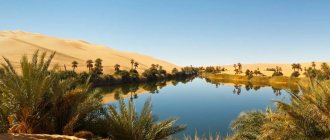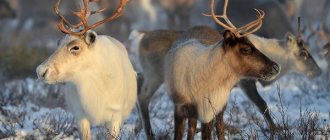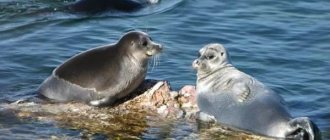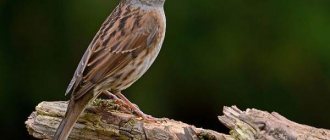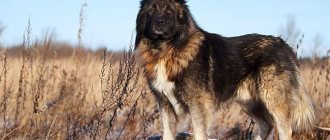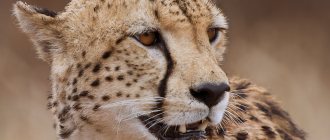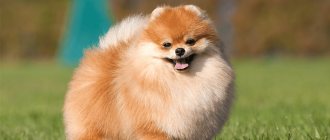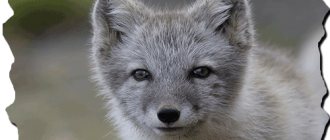Hot, dry and, at first glance, unsuitable for life, the desert accommodates a huge variety of representatives of the animal world. On our planet, deserts occupy about a third of the land. The surface is covered with sun-baked sand, rubble and stones. It rains very rarely, and there are practically no water reserves. During the day, when the sun is at its zenith, desert animals hide. You can only see a couple of birds and a quickly running lizard. When the heat subsides, the area comes alive.
Dangerous predators
Despite the fact that herbivores predominate in the desert, there is a wide variety of predators. In the struggle for territory and food, they have to constantly hunt and move a lot. They are cunning, dexterous and fast.
jungle cat
A unique desert animal that looks like a pet, but in its temperament is a wild and aggressive predator. Marsh lynx, house and Nile cat are the nicknames that the jungle cat received. Weight is about 15-16 kg, body length up to 1 meter. The body is strong and strong. Powerful paws. The fur is gray-brown with a reddish tint.
This predator goes hunting exclusively in the evening and at night. It can attack either from an ambush or wait for its victim near its hole.
Swims well and rarely climbs trees. It feeds on hares, small rodents and a wide variety of birds. Individuals live alone, well defending their territory. They hide in reeds, thickets, and bushes.
Spotted hyena
Hyenas live in semi-deserts and deserts. These are small wild mammals that eat their prey to the last piece of meat. Widely distributed in Africa. Body length 1.3-1.6 m, weight up to 67 kg. The coat is coarse and short, covered with brown spots. The muzzle is long with powerful jaws that can bite through bones. The tongue is rough, which allows you to remove all the meat from the bones without any residue. The howl that the animal makes resembles laughter.
They feed on both carrion (20% of the total diet) and freshly caught meat. Often they fail during the hunt. Animals are very strong. One hyena can independently kill an antelope, which in its mass is 2-3 times the mass of the predator.
Reference! The den of these animals is untidy and always littered with food debris and bones. At a great distance you can smell a heavy putrid odor both from their home and from the predators themselves.
Tiger
A large and menacing large cat of the desert. It can reach more than 3 meters in length and weigh as much as 310 kg. Southeast Asia is considered the birthplace of these fauna. A hungry tiger is ready to eat everything that comes his way. Hunts mammals and even small animals such as frogs, fish, mice. If a predator has been starving for a long time, it can attack its relative.
The fur is soft and has a unique color: red with black stripes. The tiger is constantly on the move. Lives alone. It marks its territory with a loud and ringing roar. Life expectancy is about 20-22 years.
Puma
This graceful cat is also found in deserts. It can reach up to 1.8 m in length and weigh up to 90-100 kg. Hunts at dawn and at dusk. Ungulates are the favorite prey of predators. They can hide their food in reserve. People are avoided, but there have been cases of attacks in populated areas.
During the breeding season they emit a loud, heartbreaking cry. This is how males attract individuals of the opposite sex. The cubs live with the female until they are two years old. Life expectancy is 20 years.
Ecological problems
Deserts are located far from places of active human activity, which makes it possible to preserve this unique ecological system. Many of them are part of national reserves. It may seem that environmental problems do not affect these hot territories, practically uninhabited by humans, but this is not the case.
One of the problems is the constant desertification of lands. Every year the borders of deserts move back by an average of 10 km. This has a negative impact on the economies of countries.
The soil layer, already minimal, is constantly subject to destruction by the wheels and tracks of cars and all-terrain vehicles. At one time, nuclear weapons tests were often carried out in these territories, many radioactive waste sites were created, which caused the problem of radioactive contamination. Given that radioactive waste can take centuries to decay, this problem is virtually insurmountable. Radioactive waste dumps contaminate groundwater.
In Arctic deserts (for example, in the Russian Arctic), the main problem is the active construction of oil pipelines, which contribute to the pollution of the territory. The natural environment here is polluted by human waste. Currently, measures are needed to preserve this unique ecosystem.
To solve this problem, protected areas are being created. For example, in the salt desert zone there is the Barsakelmes nature reserve (on the lake of the same name in the Aral Sea).
The Great Arctic Nature Reserve was created on the Taimyr Peninsula. There is a very wide range of specially protected landscapes here.
Artiodactyl representatives of the desert animal world
This group of animals unites the following orders: proboscis, artiodactyl and equid. The food of these desert inhabitants consists of plants, branches, and fruits. Representatives of ungulates are large and massive. They are constantly on the alert, because they are always the ones being hunted by predators.
Camel
Belongs to the order Artiodactyla. This is a large mammal that is well adapted to hot desert conditions. Probably many people associate camels with deserts. They can weigh up to 800 kg.
There are two-humped and one-humped representatives of this family. The unique organism is designed in such a way as to protect the animal from overheating and night cold. This is helped by fur, large nostrils and humps, in which adipose tissue is stored, decomposing into water at the most necessary moment.
Camels are constantly on the move, despite the fact that they are considered sedentary. They live in small groups of 7-9 individuals. The male has primacy and fiercely defends his harem. At dawn and at dusk they go out to pasture.
Giraffe
This is the tallest animal living on land. The peace-loving desert inhabitant reaches a height of 6 meters and can weigh more than a ton. The giraffe's long neck and 45 cm long tongue allow it to feed on leaves and branches from tall trees. The body is covered with short hair with a unique pattern in the form of spots.
The head has small ears and horns. Large eyes with beautiful eyelashes give the animal a charming appearance. A short mane runs along the entire neck. Herbivores have good eyesight. They can see each other at a distance of 1 km. The legs are high and long. They run at speeds of up to 55 km/h.
Interesting fact! It is surprising that giraffes can jump to a height of 1.8 m, but rivers are an insurmountable barrier for them.
Addax
The large antelope reaches up to 170 cm in length and 90 cm in height. These desert inhabitants weigh about 130 kg. They live in deserts and semi-deserts of northern Africa.
The coat color of the addax can change depending on temperature conditions: in winter it is gray-brown, and in summer it becomes almost white. It wears large horns on its head (up to 75 cm) and has an interesting muzzle color. They feed on plants, branches of trees and shrubs.
The artiodactyl animal, 170 cm long and weighing 65-75 kg, moves well on loose sand. The Addax (Mendes antelope) is well adapted to the harsh climate of the desert. It can go without water for a long time, since it receives the required amount of moisture from plant nutrition. Life expectancy is about 25 years.
Guanaco
The desert fauna surprises with its diversity. A cloven-hoofed mammal called a guanaco can roam under the scorching sun.
The animal belongs to the camelid family, and is also the ancestor of the domesticated llama. Its slender build is often compared to that of a deer or antelope. The long neck serves well as a balancer when running or walking. The head is also long, compressed on both sides. It has protruding ears and beautiful eyes with black eyelashes.
Guanacos run fast. The speed can reach up to 56-57 km/h. It is running that helps them survive. Eating vegetation allows you to go without water for a long time. They are hunted by wolves, dogs and cougars.
Bakers
Amazing desert animals. Outwardly they resemble an ordinary pig. They are classified as non-ruminant artiodactyl mammals.
They are unpretentious to climatic conditions and food, they can eat everything that comes their way: grass, fruits, shoots, cacti, berries, mushrooms, eggs from nests, carrion of frogs and snakes. They weigh up to 25 kg, and grow up to 50 cm at the withers and up to 1 meter in length.
They live in herds of up to 100 individuals. Listed in the Red Book. For a long time they were considered extinct.
Geographical features
Map of the location of deserts on Earth
Deserts formed on ancient land areas. In Africa, Asia and Australia they are located at an altitude of 200-600 m above sea level. In North America it is much higher - 1000 m. Desert areas usually surround or border mountains. Elevations delay the entry of cyclones and rainfall occurs in mountainous areas. Deserts receive little or no precipitation. The surface layer of soil depends on the geology of the territory and the natural phenomena affecting it.
Climate
Temperatures in the desert can exceed 50 degrees Celsius.
Climatic conditions in deserts are warm and dry. They depend on geographical location. The dry air of the area does not protect the soil from solar radiation. In the Sahara, the maximum temperature can reach +58 °C. At night the indicator drops to 0°C or even to minus level. The soil cools quickly. The temperature range can be from 20 °C to 40 °C.
Temperate deserts have very harsh winters: the thermometer drops to -50 °C. In this area, winds always blow due to excessive heating of the soil. They provoke the formation of sand and dust storms.
Interesting: North Pole - Description, features, location, climate, flora, fauna, photos and videos
Relief
A desert in Arizona with a varied topography.
The topography of deserts is formed under the influence of wind and water. They lead to erosion, blowing, and accumulation of sand masses. Temporary or permanent watercourses influence the formation of terrain. These include deep, never-ending rivers (Nile, Colorado). After heavy rain, temporary water flows appear. They create deposits near slopes and form cones. Sometimes these peaks can merge with each other and form bajadas. Water flows can form ravines, gullies, and badlands.
The wind creates a variety of landforms. It carries dust over long distances. Flying sand settles on rocks, and a landscape is formed in the form of towers, spiers, windows, arches. Sometimes an air mass carries away all the sand from the surface, and only colorful pebbles remain. This phenomenon can be observed in the Arabian Desert and the Sahara.
Sand and dust may accumulate in other areas. Dunes form there. They become denser in places where the wind encounters an obstacle. There are dunes that rise up to 300 m. These accumulations are fixed by plants or moved further by winds. In a year, a dune can move 10 m. Sometimes in the desert there are dunes, crescent-shaped deposits with high slopes and horn-shaped points. Due to the wind and the uneven distribution of sand, depressions are formed in deserts.
Interesting fact : Canada has the smallest desert - Carcross. Its territory occupies only 2.5 km2.
Amphibians and reptiles
The fauna of the desert is diverse. Many reptiles and even some amphibians have adapted to the dry and hot climate.
Burrowing frog
This is one of the largest frogs in Africa. She can be aggressive and even bite painfully. Lives in semi-deserts. Local residents consider the meat of the burrowing frog to be a delicacy.
The amphibian is a predator. She eats everything that can fit in her mouth. Leads a terrestrial lifestyle. At night it becomes active, and during the day it stays in shallow water.
It has a wide body and a rounded muzzle with a large mouth filled with sharp teeth. The powerful hind limbs are used for digging deep holes. The skin color is bright green with white spots.
Moloch
A unique and very interesting reptile that lives in the desert regions of Australia. Locals call it the thorny devil. Every centimeter of his body is covered with huge spikes.
The devil is associated with his horns on his head and his frightening appearance, which saves him from predators. In fact, the animal is completely harmless. It reaches only 15 cm in length.
The body is wide, the head is small, the paws, although powerful, have short fingers. Body color varies throughout the body. The abdomen is mostly light with a longitudinal pattern.
Horned viper
The Saharan viper has a thick and powerful body and a narrow tail. The body length is 80-82 cm. There are two vertical scales above the eyes, which is why the animal in the desert got its name. On the sides of the body there are smaller scales that form something like a saw.
The color of the horned viper is brownish-yellow with darker spots on the back. Reptiles inhabit the entire Sahara. At night the animals hunt and during the day they bury themselves in the sand.
They feed on rodents, small birds, and lizards. During the breeding season, the female lays about 20 eggs. The young hatch after 48 days.
Varan
This is the largest lizard in the whole world. Its size can be compared to a crocodile. They spend most of their lives in water, so they choose river banks for their habitat. They feed on frogs, birds, snakes, and also attack larger herbivores. To get their food, they have to travel many kilometers. Often they do not even disdain carrion.
Sometimes they themselves can become victims of certain predators (crocodiles, large birds, snakes). To defend themselves, they use their powerful tail and poisonous bites. They are constantly hunted by humans, as their meat, skin and eggs are highly valued.
This is interesting! The largest representative is considered to be the Komodo dragon, whose body reaches a length of 3 meters. The short-tailed monitor lizard is the smallest species. Its length is only 27-28 cm.
Long-eared roundhead
This desert animal has adapted well to the hot climate and hot sand. The length of the round head is 23-25 cm, and the weight is about 38-40 g. During the day, in the heat, it runs quickly among the dunes, while raising its body high and spreading its limbs wide.
Thus, it protects the abdomen from hot sand. If it notices an enemy, it buries itself in the sand with lightning-fast lateral movements, leaving only its head on the surface.
When a predator gets very close, the roundhead opens its mouth wide and straightens the folds of skin at the corners of the mouth (called ears), which quickly become filled with blood. This appearance often frightens the enemy.
Spiketail
A large lizard that can have different colors. Found in the deserts of Algeria and the African Sahara. The massive body is covered with thorny thorns. Lives in rocky and mountainous wastelands.
In hot weather it likes to bask in the sun, and in twilight it is in search of food. The menu mainly includes leaves and fruits. The lizard is always cautious and timid, as it is hunted by many predators.
It reaches a length of 50 cm, a third of the entire length is accounted for by its thick tail equipped with spines. The fingers are short but very strong. The skin is wrinkled, decorated with small spotted patterns.
Climate
In some deserts, especially those located near the equator, there is heat and drought all year round, and the temperature there sometimes reaches +50 °C. Others, like the Gobi Desert in Mongolia, are cold and windy. There, high mountains block the path of warm, humid air flows, and in winter the temperature can drop to -20`C.
Gobi Desert in southern Mongolia
Rodents
Many desert animals are constantly in danger and struggling to survive. Rodents are small representatives of fauna. Their activity increases with the onset of dusk, when the heat subsides. At this time, the search for food begins.
Jerboa
This is a small mammal that belongs to the order of rodents. It adapts perfectly to any climatic conditions, so it also feels good in the hot desert. The length of the animal can reach from 4 to 25 cm. A special feature is its tail, which is 3 times larger than the body length. Searches for food at night and sleeps during the day. The diet includes fruits, grains, roots of bushes and trees, as well as small insects, worms and larvae.
It has developed limbs, thanks to which it runs quickly and escapes from enemies. The muzzle is large, flattened on the sides. The sense of smell is practically absent, but thanks to their long whiskers they find food for themselves.
Interesting fact! All the jerboas were clean. They can brush their fur up to 30 times per day. And the smallest representative fits in a tablespoon.
Spiny mice
An amazing animal that reaches a length (including tail) of only 14 cm. The head is small with large black eyes like buttons and round ears. The rodent's back is covered with light spines, like a hedgehog's.
They are usually gray or pale yellow. White and soft hairs grow on the lower part of the body. Males differ from females in that their fur is longer and forms a kind of mane on their neck.
Spiny mice can shed their skin when in danger. It is not as durable as other mice. Regeneration in rodents occurs quickly and scars do not form at the wound site. They live in Saudi Arabia, Africa, the islands of Crete and Cyprus.
North African gundi
These small animals live in rocky deserts and semi-deserts. Shelter is found in crevices, under rocks. Their ribs are able to flatten, so they are able to crawl into narrow crevices of rocks. They have small and flat ears, as well as large eyes.
The length of their body is 16-23 cm, and the tail is from 1 to 6 cm. The fur, like that of a chinchilla, is soft and fluffy, it perfectly protects animals from cold and heat.
Gundis travel long distances to find food. They feed on plant seeds, grass, leaves, and stems. They live in families. With peculiar cries they notify their relatives of the approaching danger.
Desert hedgehog
The desert or long-eared hedgehog lives in the semi-deserts of Africa. Body length 13-27 cm, weight up to 500 g. The needles on the back are thin and short. The muzzle is covered with light hair, the eyes are small and black, and the ears are quite large. This small desert animal comes out to hunt after dark.
Eats locusts, centipedes, spiders, scorpions. Thanks to its strong jaws, it deftly grabs its prey and pulls it out from under the soil.
Water bodies
Unlike areas of broad-leaved or tropical forests, there are practically no large rivers or large bodies of water. However, there are exceptions - the Nile River, crossing the Sahara, the Amu Darya and Syr Darya rivers, filled with water from melting mountain glaciers and laid channels through the Karakum and Kyzylkum deserts. But dry, lifeless river beds tens and hundreds of kilometers long still predominate.
In the center of the Sahara there is a unique complex of 18 lakes called Ounianga, although here the average annual precipitation rarely exceeds 2 millimeters. These lakes were formed due to underground water flows in those distant times when the climate of the Sahara was still humid.
Even proximity to the ocean is possible. For example, the Namib Desert stretches for 2000 km along the African coast.
But the most famous water bodies of this unique world are the oases. In these places, groundwater comes very close to the soil surface. In oases you can find not only water, but also an abundance of food. Oases can look like small ponds surrounded by date palms, or like real cities inhabited by large numbers of people.
Arctic deserts are distinguished by the almost complete absence of swamps and a very small number of lakes. Glaciers are a kind of water body here, which are formed as a result of climate influence. Arctic glaciers reflect the sun's rays, so the planet is not heated to dangerous levels by the sun.
Birds
Desert animals also include a wide variety of birds. Each representative has a different way of eating and external features.
African ostrich
It is a ratite bird, unable to fly. It has a huge weight, up to 150 kg. The feathers are underdeveloped, which will also never allow them to rise into the air. The ostrich reaches a height of 2.7 meters. The head is small and flattened, the neck is long and thin. The beak is flat and straight.
Large eyes are decorated with thick eyelashes. The limbs are powerful and long, which allows them to move quickly on land (running speed can reach up to 70 km/h).
Griffon Vulture
The bird got its name due to the fact that its entire body is covered with brown plumage, and only its head is painted white by nature. This is a large flying predator that attacks small rodents, insects, and worms. Weighs up to 15 kg, body length is 1 m, its wingspan is 3 meters. The head is covered with fluff, but the body is covered with large feathers of varying lengths.
Desert Raven
Brown-headed is its second name. Brown feathers are located on the head, neck and back. The length of this bird is about 55 cm, weight 500 g. It is found in the African Sahara and the deserts of Sudan. Not only males, but also females build their nests. The dwelling is used for 3-4 years.
Many people are interested in the question of what animals in the desert can survive in such a hot and dry climate, where there is practically no precipitation. In fact, the fauna, even in such a sandy area, is diverse and unique.
Types of natural areas
A natural zone is an area characterized by a similar climate, uniformity of soil, flora and fauna.
Zoning is presented as follows:
- Arctic desert (sparse vegetation and fauna).
- Tundra (harsh climate, predominance of lichens).
- Forest-tundra (considerable swampiness, low-growing vegetation).
- Taiga (coniferous and deciduous forests, rich fauna of the taiga ecosystem).
- Broad-leaved and mixed temperate forests (temperate climate zone, a lot of herbaceous vegetation, diverse fauna).
- Forest-steppe (temperate continental climate, fertile soils).
- Steppes (grassy landscape, diverse fauna, few water resources).
- Hard-leaved forests and shrubs (temperate maritime climate, location along sea and ocean coasts, endemic animals are found).
- Semi-deserts (arid climate, predominance of drought-resistant plants).
- Savannas and woodlands (tropical climate, herbaceous vegetation).
- Deserts (flat surface predominates, sparseness or absence of flora, specific fauna).
- Equatorial and tropical forests (two main seasons: dry and rainy season, rich flora and fauna).
Which natural zone predominates in Russia can be seen on the map. This, of course, is the taiga, which stretches from the west to the east of our country.
Camels
They are also called ships of the desert, because they are perfectly adapted for life in arid regions, are hardy, unpretentious, can go without water for a long time, and also drink salty liquid. The camel's body is designed in such a way that it lacks sweat glands, which is why it does not sweat even in extreme heat. A camel is also able to eat the sharpest thorns without damaging its lips and oral cavity. In addition, he can completely close his nostrils from the penetration of wind and sand. The camel is man's faithful assistant in exploring the vast, inaccessible spaces of the desert.
Meaning
For humans, the desert is of no small importance. Its territories are used as pastures for livestock, as well as for the cultivation of certain plants. Cotton, melon, grapes, peach and apricot trees are successfully grown in the oases. Of course, only small areas of this unique ecosystem are suitable for human life and activity.
Many territories are rich in mineral resources - oil and gas are actively extracted here (in Saudi Arabia, Egypt, South Africa).
The uniqueness of deserts is also due to the presence of endemic species of plants and animals, characteristic only of this natural zone. These are, for example, sand cats, horned vipers, gerbils, camel thorn, and saxaul. In the Arctic - Arctic wolf, seal, walrus, polar willow, Arctic buttercup.
Interesting Facts
Deserts are not at all lifeless areas. Life is also in full swing here, only mainly at night.
Here are just a few interesting facts.
- One of the driest and hottest deserts is Death Valley (California, USA). However, the flora and fauna here is very diverse. 44 species of reptiles, 40 species of mammals, 15 species of birds live here, and more than 500 species of plants grow. There are even about 13 species of fish in the small reservoirs of karst caves.
- The driest desert is the Atacama Desert (Chile). There has been no significant rainfall here since the 16th century. Nevertheless, the inhabitants of Atacama have invented so-called “fog eliminators”, with which they can collect up to 18 liters of water per day.
- All inhabitants adapt to life in conditions of minimal moisture. For example, the Australian moloch lizard collects moisture with its own skin. The lizard burrows deep into the sand and absorbs the necessary moisture with its skin.
- The winds blowing in the Sahara can carry huge amounts of sand and dust. For example, the wind blowing during the day can move so much sand that it would take a train about 400 km long to transport it.
- In the Arctic desert you can see one of the most mysterious phenomena on the planet - spherulites. These are perfectly round stone balls, the origin of which is still unknown.
This is only a small part of the unique and mysterious phenomena characteristic of deserts.
Holy Scarab
A species of beetle from the lamellar family. The sacred scarab is considered the most powerful insect on Earth. These large black beetles reach 3-4 cm in length and weigh about 2 g. Scarabs are famous for their ability to move loads that are several times the weight of their own body. In ancient Egypt, the scarab was worshiped as a deity. The Egyptians saw his rolling of large dung balls as a symbol of the movement of the sun across the sky.
Cape ground squirrel
The animal lives in the arid regions of South Africa, settling in shallow burrows. Outwardly, it slightly resembles ordinary squirrels, but does not live in trees. The body length of this desert rodent is about 22-26 cm. It has a tail of the same length. The animal's diet includes seeds and fruits, edible rhizomes and bulbs of various plants, insects, and small lizards.
Antelope oryx
This is a species of saber-horned antelope native to Africa. This animal is also called the oryx. The height of the oryx at the withers is about 120 cm, body weight is 200 kg. Both males and females have very long, thin, almost even horns, ranging from 100 to 150 cm in length. A characteristic feature of this antelope is the black and white coloring of the head. Oryx are very resilient and are able to run at high speed for tens of kilometers. In addition, they are quite brave animals and often go on the offensive when attacked by predators. A large male oryx can even kill a lion with its sharp horns.
